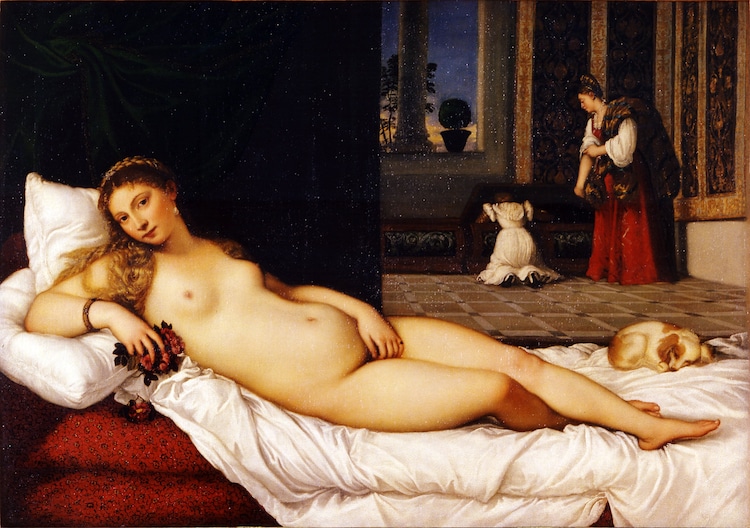
Titian, “Venus of Urbino,” 1538 (Photo: Wikimedia Commons, Public domain)
The Renaissance was a golden era for art and culture, producing innumerable iconic works of art that are still beloved today. The Venetian master Titian alone left behind an exquisite oeuvre of paintings. One of his best-known masterpieces is called the Venus of Urbino.
Depicting a female nude figure in an intimate indoor setting, this work is immediately striking. Instead of being embarrassed about her nakedness, the woman stares directly at the viewer. As a result of her enigma and the array of symbolism hidden in the composition, there have many different interpretations of the painting.
Here, we will learn more about the creation of Venus of Urbino and some of its different interpretations.
Who was Titian?
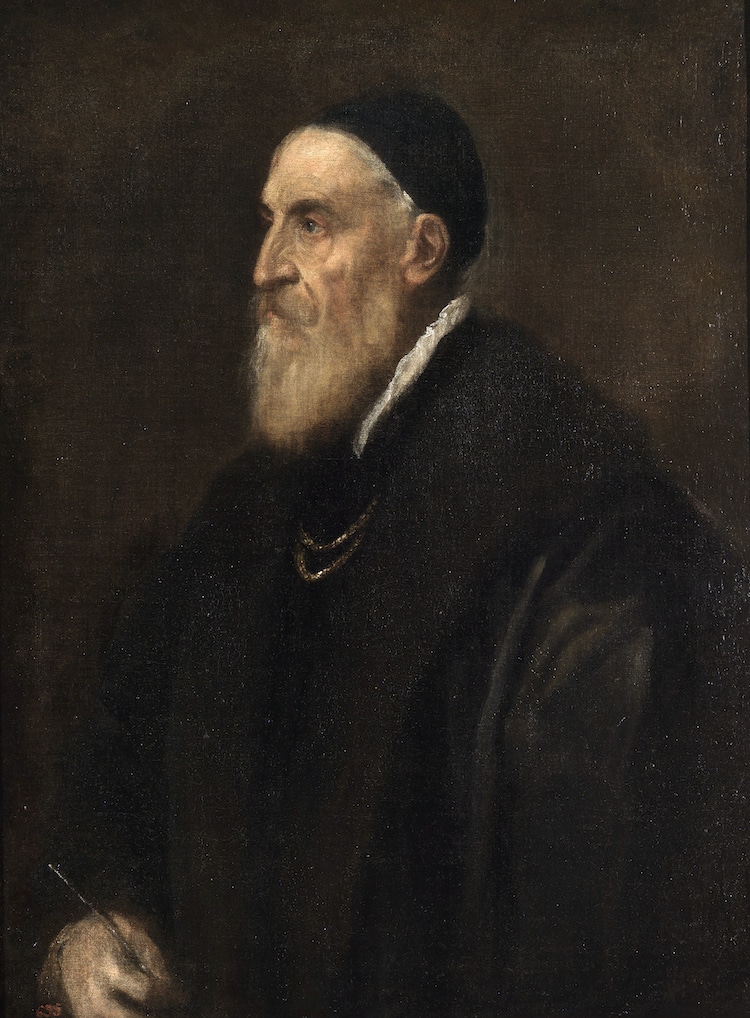
Titian, “Self-Portrait,” circa 1562 (Photo: Wikimedia Commons, Public domain)
Titian (c. 1488–1576) was an influential painter active during the Late Renaissance. Originally from the Pieve di Cadore, he moved to Venice to pursue art and was taught the Venetian school of painting by the Bellini brothers, which emphasized the importance of color over linework.
After the death of Giorgione in 1510 and Giovanni Bellini in 1516, Titian was the leading upholder of the Venetian style. Slowly, however, Titian began to leave behind the styles of his tutors and fulfill his own artistic vision. Likewise, Titian’s fame and popularity as a painter grew, and among the star-studded list of clients were doges, kings, princes, duchesses, popes, cardinals, and fellow artists. Titian achieved equal success to Michelangelo and even obtained the Freedom of the City when he visited Rome in 1546.
Exploring the Venus of Urbino
Identity of the Female Figure
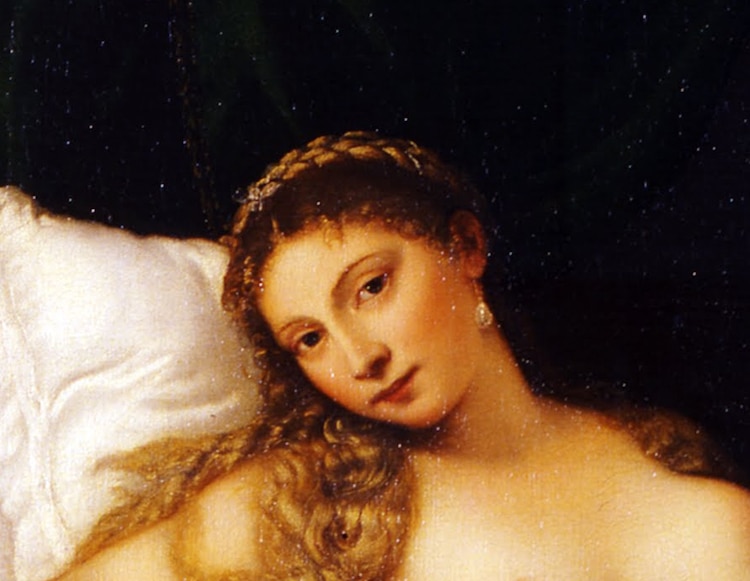
Titian, Detail of “Venus of Urbino,” 1538 (Photo: Wikimedia Commons, Public domain)
The focus of Venus of Urbino is a naked young woman lying on a bed made up of white sheets and pillows. She does not appear ashamed of her nudity and instead stares directly at the viewer. The identity of this figure is unknown but is possibly based on a courtesan or mistress.
In the painting, however, the woman is representative of ideal female beauty.
Pose
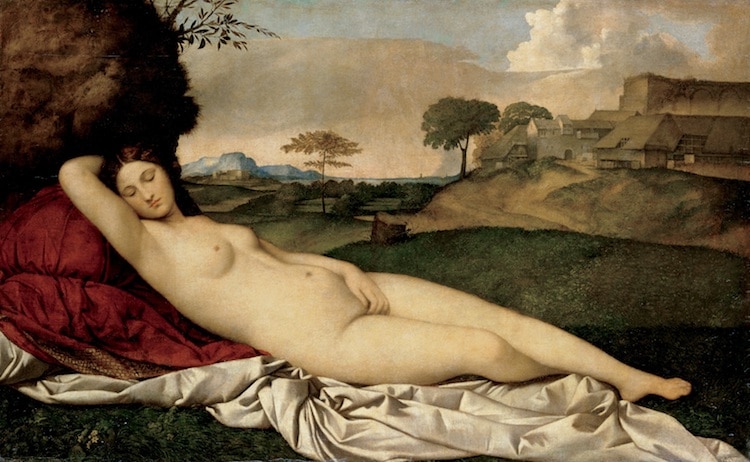
Giorgione (background attributed to Titian), “Dresden Venus,” 1508 (Photo: Wikimedia Commons, Public domain)
Venus’s recumbent pose is based on another Renaissance artist’s painting, the Dresden Venus, in which Titian is credited for working on the landscape. In both works, the female figure lies on her back with one hand placed near her genitals, both concealing and emphasizing her body.
Intimate Space
One of the most compelling aspects of Titian’s painting is the depiction of Venus in an intimate, indoor space. We, as the viewers, are invited into her home, where she is lying on the bed. This, and Venus’s nudity, imbue the work with eroticism.
Marriage Symbolism
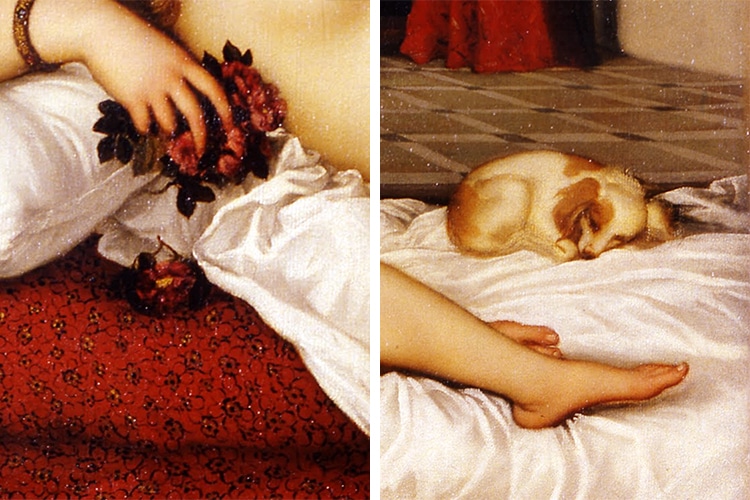
Titian, Detail of “Venus of Urbino,” 1538 (Photo: Wikimedia Commons, Public domain)
In addition to being an erotic image, the Venus of Urbino possesses a substantial amount of marriage symbolism. The clothes that the maids are gathering, for example, could refer to the tradition of a husband’s family gifting the bride with garments. In addition, the small dog that is asleep at the foot of the bed is a popular symbol of fidelity in artwork. Furthermore, the bouquet of roses cupped in Venus’s hand, and the roses embroidered onto the bed, are associated with love.
Background Figures
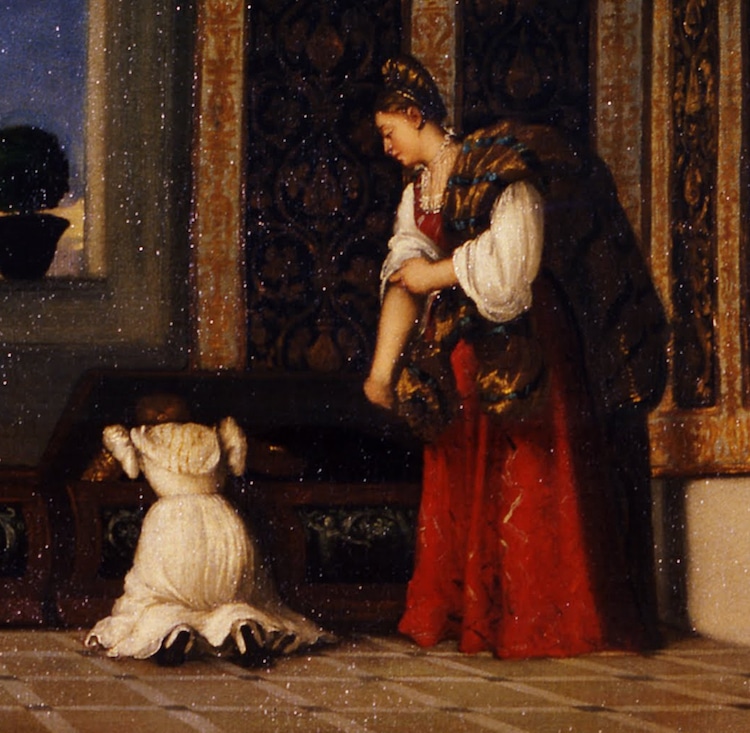
Titian, Detail of “Venus of Urbino,” 1538 (Photo: Wikimedia Commons, Public domain)
Aside from the Venus, there are two other figures in the painting and are identified as maids. One is kneeling on the floor, searching through a chest while the other is holding a garment close to her body. It is assumed that they are collecting clothing for Venus to wear.
Different Interpretations of the Painting
Despite the array of symbolism, there is no clear consensus on the meaning of the Venus of Urbino. Instead, there are a couple of different interpretations used to view the work.
One reading of it is that the inclusion of marriage symbolism could make the painting a commemoration of the wedding of the Guidobaldo II della Rovere, Duke of Urbino, and the 10-year-old Guilia da Varano in 1534. The painting was completed four years later, possibly when the couple finally consummated their marriage. Guidobaldo was the one who eventually acquired the painting, resulting in the name Venus of Urbino.
Alternatively, some letters from Titian in 1534 (the year of the painting’s completion) suggest he was creating a painting of a naked woman for a cardinal. However, the intended buyer died, and when Guidobaldo saw the work in Titian’s studio, requested to buy it.
Legacy
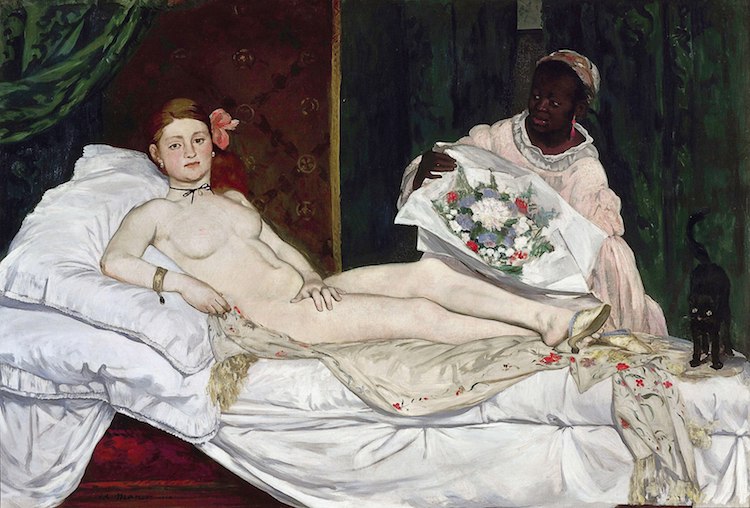
Édouard Manet, “Olympia,” 1863 (Photo: Wikimedia Commons, Public domain)
The Venus of Urbino was a powerful, erotic image that influenced generations of artists. One of the most notable examples was made centuries after Titian’s version, in 1863. Olympia by Édouard Manet recalls the Renaissance master’s work in the intimate setting, unabashed nudity, and bold gaze of the female figure.
Frequently Asked Questions
- Who painted Venus of Urbino?
The Venus of Urbino was painted by Titian.
- What is the meaning behind Venus of Urbino?
Venus’s recumbent pose is based on another Renaissance artist’s painting, the Dresden Venus. In addition, the Venus of Urbino possesses a substantial amount of marriage symbolism. But despite the symbolism, there is no clear consensus on the meaning of the painting.
- Who is the figure in Venus of Urbino?
The identity of this figure is unknown but is possibly based on a courtesan or mistress.
Related Articles:
15 Paintings That Define the Drama of the Baroque Art Movement
Discover the Cornucopia of Renaissance-Era Portrait Paintings of People Assembled With Fruit
What Is Fresco Art? Exploring the Ancient Technique of Painting on Plaster


